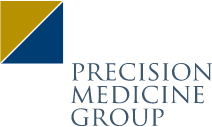First published in Pharmaceutical Executive
Starting a new job can be stressful enough without adding the uncertainty and anxiety of a pandemic. The COVID-19 stay-at-home orders lasted longer than anyone imagined. Along with pivoting quickly to remote working, our company had to onboard many new employees in this fluid and ever-changing environment and ensure they started on the proper footing.
With the right thinking and approach, and a senior staff impervious to stress, our team was able to migrate our existing onboarding process seamlessly to a virtual setting, allowing us to virtually onboard 58 new employees in a span of 12 months from March 2020 to March 2021. Here’s what we learned.
Culture, approach, and people are most important
With these three tenets in mind, the challenge was onboarding our new employees into a virtual environment. We invest a lot in recruiting, so we want to ensure our new employees are successful, which, in turn, ensures our teams, our clients, and our company are successful.
Each person we bring into our family matters, and we want to provide them with a firm grounding and a great experience. We make it a point to talk to all new hires and share the story of the origin of our company. We also make it a point to say, “Be patient, you’ll get there. Don’t be afraid to ask questions, and take risks. We are here to support you. Everyone wants you to succeed.” This is an important part of establishing in people our approach and culture—a vital first building block.
Scientific mindset is an advantage
Many situations encountered during the pandemic required novel thinking and innovative solutions; onboarding new employees was no different. Our scientific mindset allows us to approach problem solving like scientists. We asked questions, designed and performed “experiments” to answer questions, and tested hypotheses. From these results, we drew conclusions based on the evidence. This was an incredibly new situation, and we needed to think about it in a different manner. In the early days, we shared the initial plan with the entire company to hear different perspectives in order to improve it and test our thinking.
Additionally, we viewed our virtual onboarding as a process, not a milestone. It wasn’t something completed in one day with the signing of paperwork. As a result, it required check-ins built in along the way to ensure new employees were adapting and assimilating to our culture and work.
Remote onboarding requires more effort
Regardless of the environment, we focused on hiring the right people, giving them the right experience, and integrating them into our company and culture from day one. “It is important to show people how and why they fit in,” said Patricia Kelly, our Senior Vice President of HR. “Onboarding is the first impression people have when they walk in the door. This is when people begin to form opinions about how long they will stay with a company. It also is when they determine if it is an environment where they will grow and develop. That first week and month underpins all of what we do.”
When we began working from home in March 2020, the first thing HR did was build a strong collaborative partnership with our IT group to ensure new hires received the equipment they needed prior to their start dates. This helped new employees feel that they had the proper tools, and it communicated to them that it was important to us that they be set up for success from day one. In one instance, our IT Administrator, Rob Zeiger, drove equipment to a new employee’s house, so they had what they needed to begin their virtual orientation.
Structure and specifics count
Over time, our HR team has developed specific policies and standard operating procedures (SOPs) to bring employees on board, whether in person or remotely. New hires follow a detailed path from HR onboarding to meetings with leadership, to receiving ongoing departmental communications. This specific and structured approach gave us an advantage in March 2020 and made the transition to virtual onboarding seamless. Additionally, having step-by-step SOPs allowed us to see where we needed to improve or add a step, so nothing was missed.
Connection is communication and vice versa
Walking through the door or logging in for the first virtual meeting with senior staff makes a critical first impression. Keeping that personal touch required many complex processes to work together and coordinate. We had to replace the informal meetings and teachings that happen when you walk around an office. You can’t do that during a pandemic, so our managers made extra efforts to talk with new employees every day. Our HR team also performed weekly check-ins, and, after 30 days, had a virtual sit down with all the new hires to learn about their experiences. This included asking them everything from whether people were being supportive of them, to how they were integrating with their teams.
We needed an “always-on” resource
When in the office, a new employee can turn to the person next to them and ask a question. However, a remote environment isn’t conducive to that interaction. It can be difficult to establish relationships in the absence of in-person connections.Furthermore, new employees start at many different stages of career growth. Some people who have recently completed PhD programs or are fresh out of college just don’t have experience with our type of business environment.
Along with other senior executives in the Precision Value & Health network, we realized the value of a centralized “location” where new hires could go for answers, so we launched an online portal in December 2020, which now supports and complements the lessons learned by new employees in their first days and weeks. We took the in-person experience and supplemented it on the online portal with everything from our origin story to our leadership, to departmental structures. While nothing can replace the one-on-one connection, our portal is a point of contact where employees can go for answers, as well as for resources. These range from our guiding principles and a list of elements that make for an ideal employee, to an outline of the client-facing team structure—even a cheat sheet of PRECISIONscientia acronyms. It is a one-stop shop.
Keep it going. Increase the engagement
The onboarding process was also accompanied by the roll out of a regular cadence of employee engagement activities, and introduced a rewards and recognition program to incentivize existing staff to engage with and reach out to new employees. We find it important to recognize teams who were able to embrace new staff members and help them to feel connected and welcomed.
To us, onboarding is not a one-time event; it is a collection of experiences that shape how an employee enters, feels about, and contributes to a team. Regardless of whether new employees are onboarded in-person or remotely, the goal is to give them experiences that ensure they feel welcome, comfortable, set up for success, and a part of something great.
We want them to know they are not just starting a job—they are becoming part of a family. We want them to see our company as a place to grow, thrive, and succeed in the long term, whether in the office or working from a remote location.
Nate Wible, PharmD, is EVP, Managing Director of medical communications agency PRECISIONscientia, part of the Precision Value & Health team.







